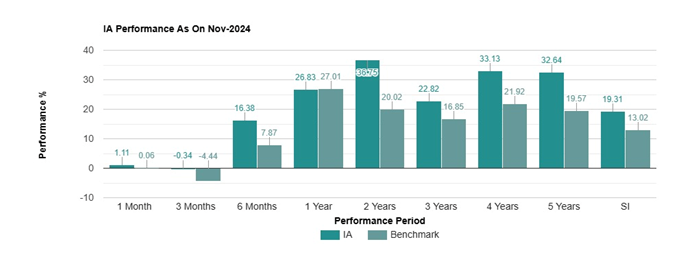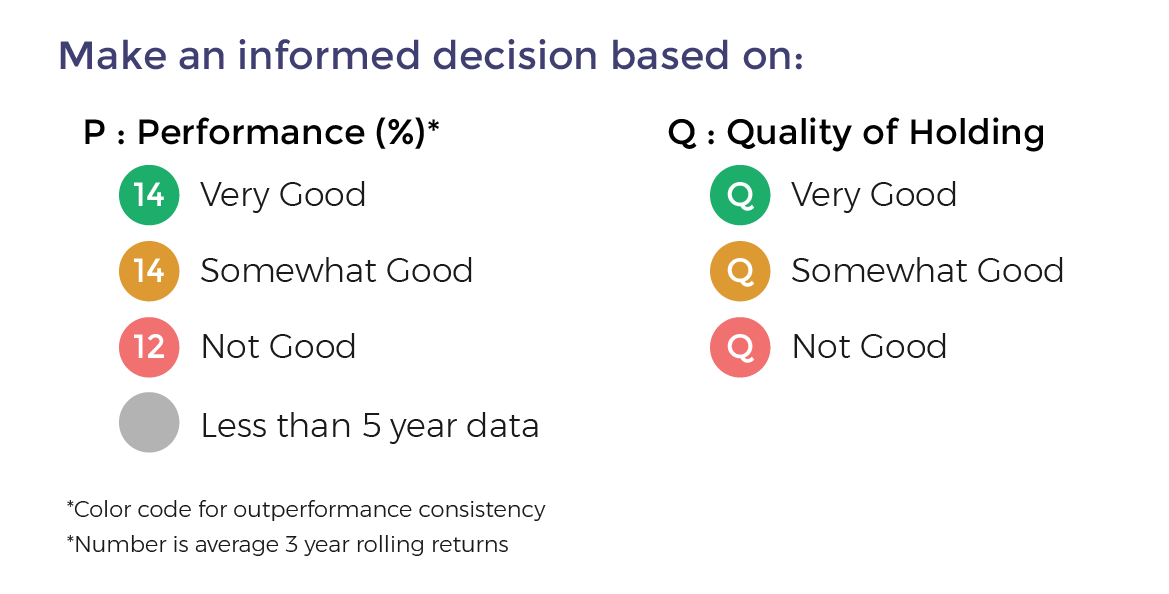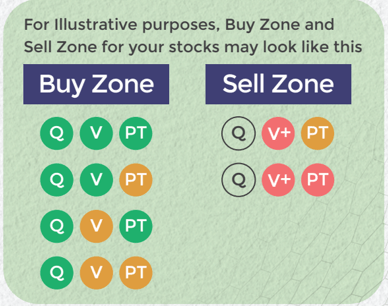Ravi Dharamshi is a distinguished investor and the Founder, Managing Director, and Chief Investment Officer of ValueQuest Investment Advisors, a boutique SEBI-registered portfolio management firm in India. With over two decades of expertise in equity investing, he is renowned for identifying high-quality businesses with strong potential for long-term growth.
Before founding ValueQuest in 2007, Ravi Dharamshi honed his skills at Rare Enterprises, where he worked as an Analyst under the mentorship of legendary investor Rakesh Jhunjhunwala from 2003 to 2007. His journey exemplifies a deep commitment to investing and a relentless pursuit of creating wealth for his clients. Under his leadership, ValueQuest has consistently demonstrated exceptional performance. The firm’s flagship VQ Growth Fund has delivered an impressive annualized return of 19.31% since its inception in October 2010, significantly outperforming the S&P BSE 500 TRI, which returned 13.02% over the same period. This success reflects ValueQuest’s disciplined research-driven approach and commitment to excellence.

Source: APMI
In his insightful presentation, ‘Analysing competitive advantages with Mr. Ravi Dharamshi’, delivered to the Finnacle Institute, Mr. Dharamshi shared valuable lessons from his successful investing career. This blog is structured in two parts: Part 1 will introduce ValueQuest’s S.C.A.L.E framework, Part 2 will explore the key drivers of wealth creation and ValueQuest’s rigorous research process.
Let’s dive into Part 1!
VQ Scale Framework
Scalable companies, with sustainable Competitive advantages, Adaptive on a Long runway with superior Execution capabilities.
Scalable Companies:
Scalable companies possess key attributes that enable sustainable growth. They are built on strong institutional frameworks, ensuring the business can hire and retain skilled personnel capable of strategic thinking and effective execution. Unlike businesses overly dependent on specific individuals, institutionalized organizations can overcome scale barriers and achieve long-term success. Additionally, a solid financial foundation, supported by a strong balance sheet and stable cash flows, is critical for scaling initiatives. Weak financials or irregular cash flows can hinder growth and create vulnerabilities during challenging business environments. Equally important is good governance, which ensures the alignment of incentives between management, the board, and minority shareholders. Transparent accountability—where management answers to the board and the board is accountable to shareholders—fosters trust and drives sustainable value creation.
Competitive Advantages:
Competitive advantages can arise from several key factors, including cost leadership, network effects, intellectual property, and brand and distribution strength.
Cost leadership is particularly crucial in commodity industries where producers lack pricing power. Companies with the lowest production costs can achieve greater profitability and resilience in such markets. Network effects occur in businesses like social media applications, where value to users increases as more people join the network. Communication becomes more effective when both sender and receiver use the same platform, creating a self-reinforcing cycle of growth and user engagement.
Intellectual property provides a significant advantage when a company develops proprietary production methods or technologies. The exclusivity of these innovations often translates into higher profit margins and a competitive edge. In consumer-focused businesses, strong brand recognition and efficient distribution systems are critical. They create high switching costs for customers, ensuring loyalty and sustaining market dominance. Together, these competitive advantages enable companies to build and maintain a leading position in their respective industries.
Adaptive:
Paraphrasing Darwin, it is not the strongest or the largest companies that survive, but those that are most adaptable to change. Adaptability allows businesses to evolve in response to shifting market dynamics, emerging challenges, and unforeseen disruptions. Companies that thrive in the long term are those capable of enduring economic downturns, capitalizing on opportunities in adjacent markets, and demonstrating both resilience and flexibility in their strategies.
Resilient businesses are able to withstand temporary setbacks and navigate through turbulent times without compromising their core operations. However, resilience alone is not enough. These companies also proactively seek new avenues for growth by expanding into adjacent markets or product categories. Such strategic diversification minimizes over-reliance on a single market or revenue stream, creating a broader foundation for sustainable growth.
A critical aspect of adaptability is the willingness to experiment. Thriving companies embrace controlled experimentation by taking calculated risks that could lead to innovative solutions or new revenue streams. These experiments are typically low-stakes, ensuring that potential failures do not jeopardize the business’s survival. For example, a business may pilot a new product line or test entry into a smaller market before committing significant resources. This iterative approach fosters learning, agility, and innovation while mitigating downside risks.
Equally important is a commitment to sustainable practices. Companies driven by short-term gains at the expense of sustainability face significant risks. Profits generated through unsustainable practices—such as environmental degradation, poor governance, or unethical operations—are increasingly vulnerable to regulatory scrutiny, societal backlash, and environmental constraints. As regulatory, environmental, and governance standards tighten globally, businesses operating unsustainably may find their operations restricted or even rendered obsolete.
In summary, the key to enduring success lies in adaptability—a company’s ability to evolve with market conditions, experiment responsibly, and embed sustainability into its practices. By doing so, businesses not only safeguard their survival but also create a platform for consistent growth and long-term value creation.
Long Runway:
Growth is a crucial driver of wealth creation, as it enables businesses to scale, improve profitability, and deliver long-term value to stakeholders. For a business to achieve sustainable growth, several critical factors must align.
First and foremost, the business needs access to a large addressable market. A significant market size ensures ample opportunities to expand operations, capture new customers, and increase revenues. However, simply having a large market is not enough; the business must also be demographically aligned with the region in which it operates. This means understanding the population's preferences, purchasing power, cultural nuances, and evolving needs to tailor products or services accordingly.
Another essential factor is the presence of favorable industry tailwinds. These are external conditions or trends that naturally support growth, such as technological advancements, regulatory changes, or macroeconomic shifts. For instance, industries benefiting from digital transformation, renewable energy, or rising consumer demand often enjoy a tailwind that propels growth opportunities.
Additionally, businesses must develop and rely on multiple growth engines rather than depending solely on one. This diversification reduces dependency on a single driver and associated growth challenges. A business with a single growth engine runs the risk of prematurely ending its runway. By strategically aligning with these factors—addressable markets, demographics, industry tailwinds, and multiple growth engines—businesses can build a robust foundation for sustained growth.
Execution:
Execution is the foundation of a company’s success, turning strategies into tangible results. It hinges on three critical elements: a capable second-level management team, superior cycle management, and superior capital allocation.
A strong second-level management team is essential for operational efficiency and scalability. These leaders drive day-to-day operations, align departmental goals with the company’s objectives, and ensure continuity, especially during leadership transitions or periods of growth. Their expertise and decision-making reduce dependence on top executives, fostering stability and resilience.
Superior cycle management enables businesses to navigate economic, industry, and operational cycles effectively. Whether adapting to economic downturns, or aligning with industry trends, companies with this ability minimize inefficiencies and maximize profitability. By responding strategically to market conditions, they remain agile and competitive, even in challenging environments.
Superior capital allocation is another hallmark of strong execution. Companies that excel in this area allocate financial resources to projects and opportunities that yield the highest returns while maintaining financial stability. They invest in growth initiatives, manage debt prudently, and return excess cash to shareholders when appropriate. This balanced approach ensures sustainable value creation and investor confidence.
Companies that highlight the elements of the S.C.A.L.E Framework are strong candidates for wealth creation.
To continue exploring this topic and dive deeper into our insights, don’t miss out on Part 2 of our blog. Click here to access it now!
Already have an account? Log in
Want complete access
to this story?
Register Now For Free!
Also get more expert insights, QVPT ratings of 3500+ stocks, Stocks
Screener and much more on Registering.

































Comment Your Thoughts: